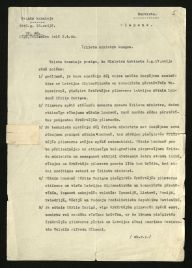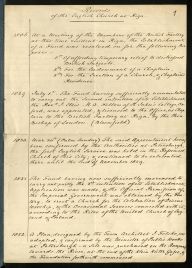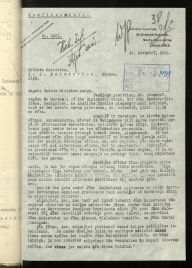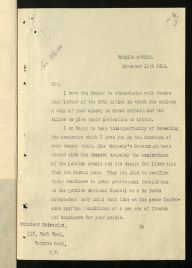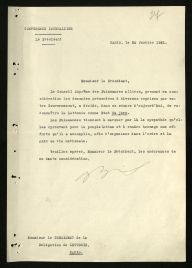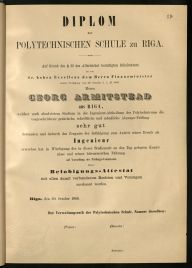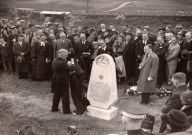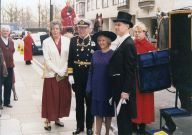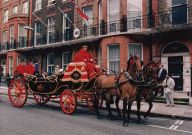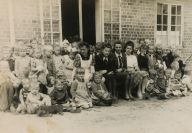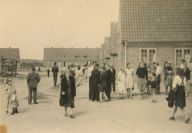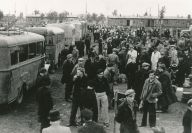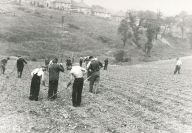Archive records show that there was already a relationship between the area now called Latvia and Great Britain in the 17th century: James I of England was godfather to Jacob, Duke of Courland. English traders and businessmen were active in Latvia in the 19th century, and an Englishman, George Armitstead, First Baron Armitstead, (son of an English jute merchant living in Latvia), was the successful mayor of Riga for 12 years at the turn of the 20th century. Latvian sailors were frequent visitors to British ports.
In 1918, Zigfrīds Anna Meierovics wrote a letter to the heads of government from a hotel in London, asking them to recognise Latvia's independence, which they did. Already on 11 November 1918, the Minister of Foreign Affairs of the United Kingdom of Great Britain and Northern Ireland, Arthur James Balfour, wrote a note to Meierovics regarding the recognition of the Latvian Provisional National Council as a de facto independent body. From July 1933, Kārlis Zariņš was the Consul General and Envoy in the United Kingdom. Before the Second World War hundreds of Latvians were living, working and studying in England, and had established the Society of Latvians in Great Britain. After the war, approximately 16,000 Latvians arrived in England as refugees, and so started 46 long years of exile.
The contract is drawn up in the form of a privilege or concession. It granted freedom of navigation and trade to the Duke's ships and people, both in England and in all its colonies and dominions, both on land and at sea. All the officials of the Republic were ordered to consider the duke's people as friends and to give them the necessary support.
Although Duke Jacob had supported the Stuarts in the Civil War, it was more important for him to ensure the realisation of his commercial and colonial goals. Therefore, when Parliament prevailed in England, the Duke concluded a treaty of neutrality with Oliver Cromwell in 1654 and a free shipping treaty in 1657. They did not have much significance, because, while the duke was a Swedish prisoner, the monarchy was restored in England.
In response to the Duke's letter of November 1, the King of England thanks the Duke for the invitation to the baptism of Wilhelm's son. As it was not possible for the king to attend, he appointed his authorized representative. It should be noted that sending a representative in his place did not show any less honour, but was a common occurrence at that time.
LVVA, 3234. f., 33. apr., 36971. l.
Ambassador Janis Lusis on his way to Beckingham Palace to Queen Elizabeth II. 1992 November 10 th. LNA LVKFFDA 79. fonds
Brief Historical overview 1944-1946
The website of the National Archives of Latvia has an extensive virtual exhibition “Camps in Germany for Refugees from Baltic Countries 1944–1951” ; therefore, this article provides only a brief summary as an historical context for the virtual exhibition "Latvians in Great Britain".
The story of Latvian refugees in Britain begins with a major displacement of the Latvian population during the Second World War, triggered by the invasions and illegal occupations of Latvia by Soviet Russia, Nazi Germany and again by Soviet Russia, between 1939 and 1944. In particular tens of thousands of Latvians fled their homes in advance of the second Russian occupation in the autumn of 1944. The majority travelled west either by boat to Sweden or East Prussia or overland through, Lithuania, East Prussia, Poland and Germany. The journeys were treacherous and difficult, taking in some cases up to two years, and unfortunately many lost their lives. Many were separated from their families and a significant number became ill or were injured during the journey. Over a hundred thousand Latvian civilians are estimated to have reached Germany via these routes.
Following the end of the war the United Nations Relief and Rehabilitation Administration (UNRRA) and later the International Refugee Organisation (IRO) became responsible for their welfare, together with the military authorities, and established over 300 refugee camps to safely house them. These were dotted across Germany and accommodated either single or multiple nationality groupings, including Latvian, Lithuanian, Estonian, Ukrainian and Belarusian refugees. They ranged from former munitions factories, army barracks, residential houses and even a castle (Schloss Gottorf) and a former zoo (Hamburg Zoo).
The initial priority of the camp authorities was to meet the basic needs of the displaced persons (DPs), including food, medical needs and accommodation. Once settled, the Latvians then began to attend to their own cultural, educational and emotional needs. Their aim was to replicate their homeland as far as was possible in the camp environment, and to improve their quality of life. Culturally, the Latvians began to form “Little Latvias”, organising dance, theatre and singing groups, scout groups, circulating newspapers and literature, as well as setting up schools, training centres and even establishing the Baltic University in Hamburg (later moved to Pinneburg). The entire Latvian ballet had escaped to the West and was re-established at Lübeck, while at Oldenburg Camp, a Latvian opera was formed. Lutheran services were held in the camps, including weddings and funerals, while recreational and medical facilities were also established, as well as a central tracing bureau to locate lost relatives Through cultural activities and the celebration of important national days, such as St John’s Day and Latvian Independence Day (18 November), the Latvian refugees began to form Latvian identities in exile, which strengthened their resolve to overcome Soviet oppression of their beloved homeland.
Some Latvians were accommodated in the camps for up to three or four years. Over that period, the camps became of better quality and a re-ordering towards single nationality groups took place. Throughout their years in the camps, the Latvian DPs hoped for a resolution of their plight. However, as the Soviet Union’s grip on Latvia strengthened, it became increasingly clear as early as 1946, that they would not be returning to their homeland. Despite improvements, camp life was never a long-term solution and authorities were keen to resolve the issue.
During 1945 and 1946 the Allied authorities had also begun assigning DP status to former Latvian prisoners of war, who had fought within the German military forces, and they were housed in separate military camps. In 1945 former Latvian soldiers in a POW camp in Zedelgem, Belgium, formed the organisation “Daugavas Vanagi”, which later in Britain became the Latvian Welfare Fund (Daugavas Vanagu fonds). Its role was to address the welfare needs of Latvian ex-servicemen and to keep the national culture and identity of Latvians displaced from their homeland alive and played a significant role in the exile communities.
The first important emigration to Britain occurred in 1946, when about 900 Latvian women were recruited by the British Government to work in tuberculosis sanatoriums. Subsequently the European Volunteer Workers (EVW) programmes recruited workers to Britain to meet the need for labour in key occupations. The “Westward Ho!”, scheme was designed to bring men and women to work in agriculture, forestry, coal mining and cotton textiles. Another, the “Balt Cygnet” programme, was targeted at young single women for jobs in hospitals or domestic service. In total between 1946 and 1950, about 16,000 Latvians came to Great Britain from the refugee camps in Germany. They played an important contribution to the rebuilding of the post war British economy, which was on the verge of collapse after the Second World War.
Source: Emily Gilbert. Rebuilding Post-War Britain: Latvians, Lithuanians and Estonian refugees in Britain, 1946-1951. Barnsley: Pen and Sword, 2017.




